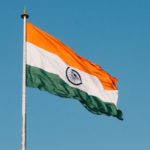Many people have a hard time understanding data, but with the help of maps, they can see relationships in their data. Maps are an excellent way to show your data geographically and make it easy for your audience to understand what is going on. Interactive maps allow the user to click and drag points of interest around the map; when they do this, information about that point will be displayed in a panel below the map.
You can also choose from many different styles of mapping: you could get directions between two locations with one click, find out how far it would take someone driving at 60 mph to reach their destination, see what restaurants are nearby without opening up any other apps or websites, the possibilities really are endless!
In this article, we will cover several aspects of mapping data geographically to create your own maps without any hassle.
What is the purpose of mapping data geographically?
Mapping data geographically is a useful way to analyze and visualize geographical information. This type of mapping can show how far people live from schools or how long it takes to travel by car between two points. When you map your data this way, you have the ability to change variables like transportation mode or distance, which in turn changes how quickly the user can get back on their computer once they’ve made adjustments!
Although there are many reasons why someone might want to create maps with geographical information, you will cover three major benefits:
- Making decisions based on geography instead of opinions.
- Creating visualizations that wouldn’t be possible otherwise.
- Showing trends over time (especially for things like population).
In general, these types of maps allow the users to decide how they might feel about a particular location easily. For example, if someone is looking for a place to live and one has great schools, but it’s not close by public transportation, while another option is farther from their work or school but closer to buses that often travel at rush hour. By mapping your data geographically, you can compare information in an entirely new way.
Additionally, when applying this method with timeframes, using geographical projections allows us to visualize trends over time better than other visualization methods, such as bar graphs showing population growth over time.
Tips for mapping your data geographically:
- Pick a location that will be the center of your map: Having a central location makes it easy to locate your map and can be adjusted if necessary.
- Include just enough information to make it clear what you’re mapping: Do not include too much detail in the legend for a map with many different layers of data – this will only confuse viewers trying to understand how the maps relate to one another.
- Add additional details on relevant places or regions: For example, adding population density around large cities in an urban area where there is less space available makes sense. Adding regions that are well-known tourist destinations also adds context and relevance to geographical projections over time when showing changes in tourism activity by region across countries. A multiple address map needs to be clear, concise, and clean for offering user-friendliness to the users.
- Use shapes other than squares for borders:
Square-shaped borders don’t always show as clearly because they can create confusion in the reader’s mind. Instead, use curves or small dots to represent your borders.
- Map out how you want to show information on each geographical area before drawing it in: Planning out how you want to show information on each geographical area will help with drawing it in. Create rough drafts with map creation tools and keep adding data simultaneously so that it’s easy for you to map everything with perfection.
- Keep the map easy to read:
Keep your map as readable and concise as possible, which means not too many colors or individual shapes should be used. Don’t use more than three different colors unless they are necessary for distinguishing between regions. If there is a lot of data that needs to be shown, make sure the borders are thick enough so it doesn’t get hard to see where one region ends and another begins because this can confuse people when reading your map.
- Label important points on maps clearly:
Labeling all points helps readers understand what everything means instead of having them have to look up every moment individually before someone can understand it.
- Use color keys, labels, and legends for clarity:
For example, if you have crime rates per year mapped by region: red could indicate high crimes (50+) while green would represent low crimes (<30). This can help users understand where they are looking at quickly without having to look at every data point individually.
If there is no way to fit all of your points onto one page or post, then consider breaking up into multiple maps with different items like schools, transportation routes, etc., so readers don’t get overwhelmed seeing too much information all at once.
Conclusion:
There are various things that can be done to map your data geographically. Make sure you use these tips to map your information effectively!













